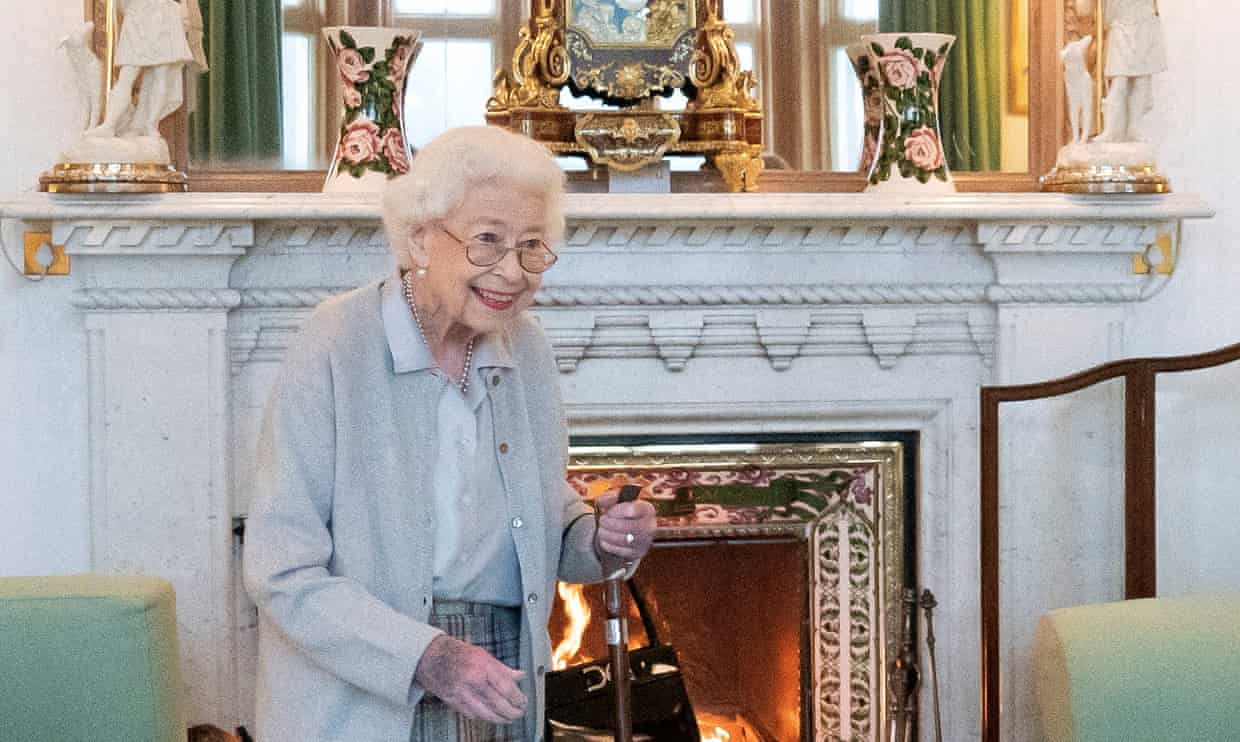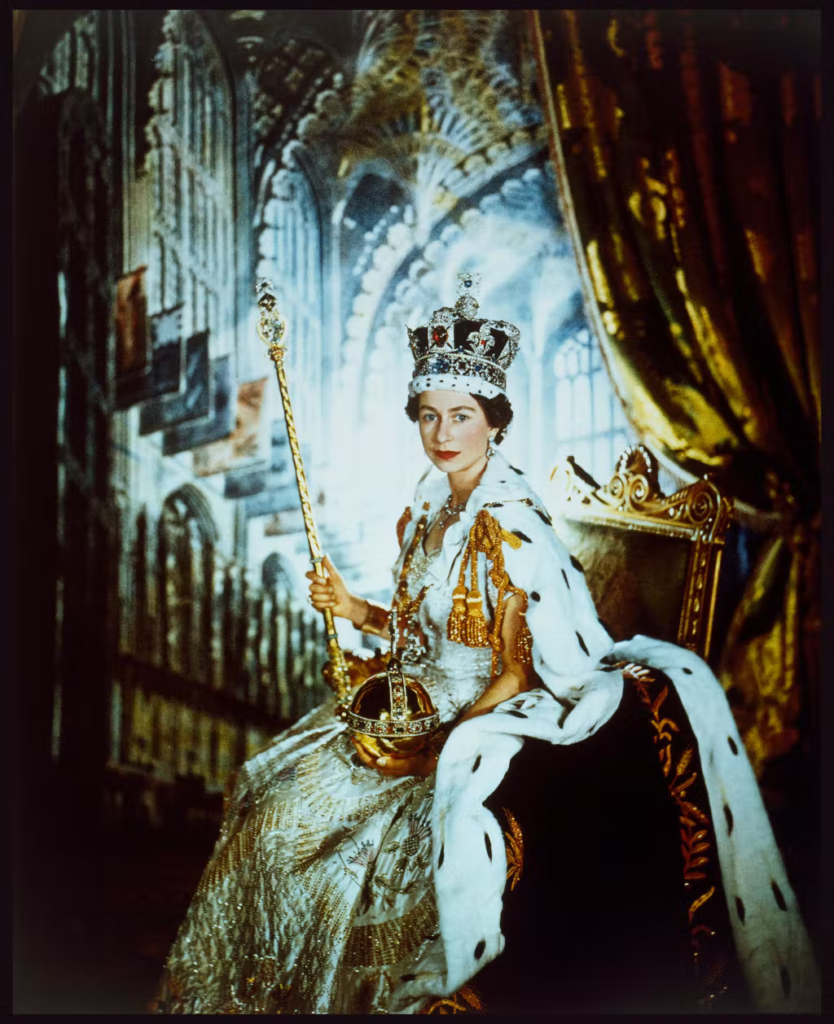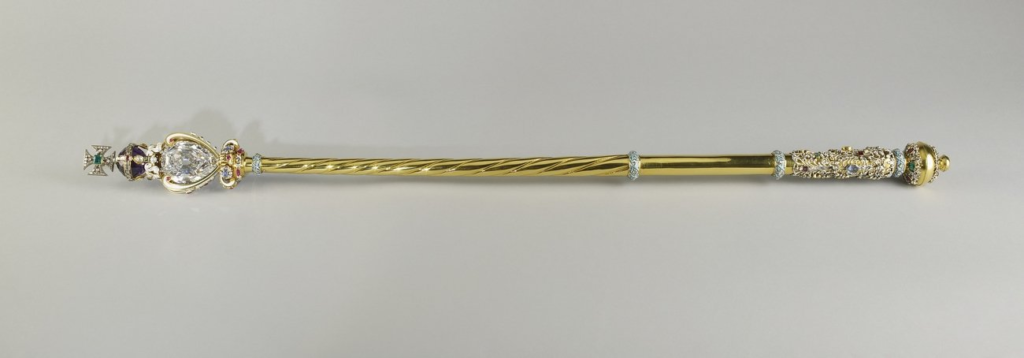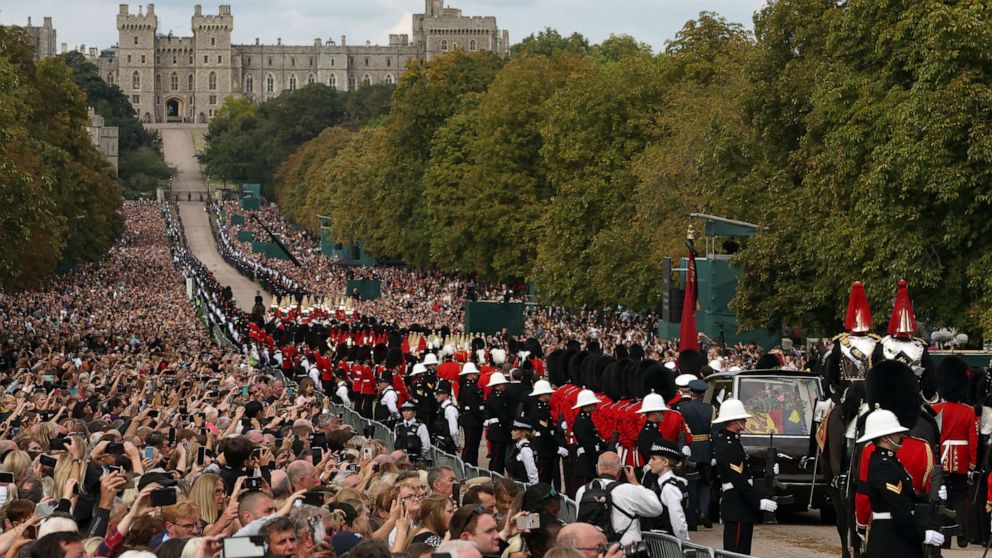Is the Queen’s funeral a requiem for humanity?

The event
Queen Elizabeth’s funeral marks the end of an era.
What era?… And, exactly what have we been celebrating?…
Australia, and indeed, seemingly most the rest of the world has spent the last two weeks mourning the passing of a 97 year old lady on the other side of the globe with a panoply of highly organized pomp and circumstances that I don’t think has been equaled anywhere/anytime on the planet in my lifetime of 83 years. It has clearly been a celebration of the end of an era….
As an evolutionary biologist I tend to take a broader and longer term view of world events than most people. I have spent my life considering the diversity of life and the roles humans play in it (having taught university courses in biogeography and evolutionary biology). Where time is concerned, I have studied the history of life from its origin on Earth more than 4.5 billion years ago, to humanity’s likely path into the future and its impact on the planetary biosphere.
I will argue here that recent funeral is for very much more than just the end of the life of a respected old lady. For most of us we are celebrating the life of Britain’s longest reigning monarch (and the second longest reigning monarch anywhere in the world). As far as monarchs go, Elizabeth was undoubtedly exemplary. For 75 years she provided the ceremonial focus for an endless list of Commonwealth, British, regional and even local events and milestones — and truly ‘died with her boots on’ in the service of the state, appointing and welcoming her 15the Prime Minister of the United Kingdom only two days before her death.
Beyond this, QE2 reigned over the waning days of the of the island nation that had given birth to the Industrial Revolution and for a century or so had dominated the entire planet. Thanks to the debilitation caused by World Wars and the recent disconnection from the broader world leading to Brexit, there is even increasing pressure in the minor kingdoms of the UK (e.g., Scotland, Northern Ireland, and Wales) to disunite from England. And then there is the Commonwealth, where a number of its nations are progressively distancing themselves from the monarchy.
The extent of the Funeral, is at least partially a funeral for the lost grandeur of an Empire that is diminishing like a leaking and shrinking balloon.
Unprecedented logistics and costs
However, personally, I could not but ponder the monumental cost of planning, organizing, and organizing the logistics for the two week long event. Around 500 of the heads of state, royal families and other international notables, together with thousands of British notables, will be catered for (and guarded) at the main events. And then there are the hundreds of thousands over several days willing to queue for up to 24 hours just to pass by the Coffin to pay their respects. Beyond this there are the uncountable numbers of people filling public spaces just to watch the funeral procession pass by.

And then there is the phenomenal cost of all the perishable ceremonial gear. For example, several hundred to more than a thousand bearskin hats were worn by the ceremonial guards. The skin of a single Canadian black bear, costing around £750, is required for each hat, with no hint being provided re the cost of turning the skin into a hat, and then the cost of clothing and training the troops for their essentially absurd ceremonial duties.
Consider the Crown Jewels (most are crystallized carbon) being displayed for the Funeral…
Of course, the value of these trappings and the ceremony is still trivial compared to that of the fraction of the Crown Jewels used in the Coronation Regalia: the Imperial State Crown, the Sovereign’s Sceptre with Cross, and the Sovereign’s Orb. These were placed on Elizabeth’s coffin for the Funeral to represent the ‘Crown’s’ once immense wealth and worldly power. For more details see Crown Jewels of the United Kingdom.

Coronation portrait of Queen Elizabeth II, 2 June 1953. The Queen wears the Imperial State Crown, 1937 and holds the Sovereign’s Sceptre with Cross, 1661 and Sovereign’s Orb, 1661. Photo by Cecil Beaton, © Victoria & Albert Museum, London. (historicroyalpalaces.picturepark.com) via Tower of London.

Imperial State Crown of the United Kingdom. Source
G. Younghusband; C. Davenport (1919). The Crown Jewels of England. London: Cassell & Co. p. 6.) Photograph: Cyril Davenport (1848 – 1941). Retouched by Firebrace to incorporate 1937 modifications for George VI’s coronation.
The Imperial State Crown has never been formally appraised, but on its own it is estimated to have a value of £1-5 BILLION ! The jewels consist of:
- 2,868 diamonds, including the the 317.4 carat Cullinan II diamond (third largest cut white diamond in the world)
- 269 pearls, including four large hanging pearls that belonged to Queen Elizabeth I
- 17 sapphires
- 11 emeralds
- four rubies

The Soverign’s Sceptre with Cross 1661, set with Cullinan I diamond. At 530.2 carets it is the largest colorless cut diamond in the world. Image: Royal Collection Trust/© Her Majesty Queen Elizabeth II 2022


The Orb is a representation of the sovereign’s power, symbolising the Christian world, with its cross mounted on a globe, and the bands of jewels dividing it up into three section representing the three continents known in medieval times. During the coronation service the new sovereign is first anointed with holy oil, then robed in coronation robes, and then invested with a number of ornaments symbolising the chivalric nature of kingship. These include the spurs, swords and armills and then the Sovereign’s Orb, which is placed in the right hand of the monarch, before being placed on the altar.

© The Royal Trust.
To me, the display of the Coronation Regalia on the coffin and the surrounding pomp and antique tradition as the Queen’s remains progressed from Westminster Abby to their place of internment in Windsor Castle look back to the past majesty of the British Imperial power that no longer exists — a power that enabled the Industrial Revolution ad consequently dominated and exploited more of Earth’s human and natural resources than any other nation has ever done.
Thus, we have spent the last two weeks commemorating a now passed world when humans (especially Anglophones) were taught and believed that they had a divine right to planetary dominion — and acted on that premise. We are now living with the consequences of that dominating world view.
Requiem for a once green and vibrant planet and a species that believed it had dominion over it
For nearly two weeks the only thing in our daily news (to the exclusion of almost anything else (except football finals) related to the Queen’s death, her funeral. her life and times, and her heirs. Clearly this was the only thing people needed to know and think about.
This is despite the well documented fact that our green Earth is progressing at an accelerating rate down the slippery slope of runaway global warming into a ‘hothouse’ state and the mass extinction of most complex life.
Personally, the fact that the inevitable death of a very old lady totally stops the news (and most action) on our biosphere’s progression towards mass death (including the likely end of our own species — probably within a century (which was, incidentally, the Queen’s lifespan) gives me little confidence that humans will act sufficiently stop our own progress towards oblivion. Thus, I could not help but see the funeral as a celebration of the accelerating decline and impending end of our past 3+ billion years of evolving life.
Very few large, long lived, and complex species of organisms will be able to adapt fast enough to cope with 10+ °C increases in average temperatures. They will either be killed directly as their genetically determined temperature maxima are exceeded, or will die-out as the ecosystems supporting them collapses through the death and extinction of keystone or foundation species providing ecological services other species require at some point in their individual life-cycles (corals and kelp are keystone species showing what happens when they die out).
I wonder how much progress towards stopping the progress of global warming would have been made if the same organizational and logistic effort spent on organizing and putting on the Funeral had been spent focusing on climate action to say nothing of what might be achieved by devoting Royalty’s immense wealth represented by their holdings in carbon crystals to developing practical methods for removing excess carbon from the atmosphere.
In a sense, the time and resources spent on the Funeral is delaying and possibly reducing the magnitude of responses that might effectively stop global warming in the short time remaining (assuming that it is still possible to stop).
Look Up! Don’t be distracted by pomp and circumstances

In other words, Wake up! Smell the smoke! Look around and see the grimly frightful reality. Fight the fire that is burning up our only planet so we can give our offspring a hopeful future. This is the only issue that matters. Even the IPCC’s hyperconservative Sixth Assessment Report that looks at climate change’s global and regional impacts on ecosystems, biodiversity, and human communities makes it clear we are headed for an existential climate catastrophe if we don’t stop the warming process.
In Greta’s words, “even a small child can understand [this]”. People hope for their children’s futures. She doesn’t want your hopium. She wants you to rationally panic enough to wake up, pay attention to reality, and fight the fire…. so our offspring can have some hope for their future.
Because the climate emergency is such a major problem, there is no hope of surviving it without having government resources, leadership and intergovernmental cooperation. The fossil fuel magnates are still working very effectively to stop action that might be immediately harmful to their special interests (long term survival is beyond the range of their radars). They still buy the allegiances of the major parties to look out for their interests. For this reason your votes in national, state and local elections are still your most powerful tools for generating effective climate action.
Victorian voters: See VoteClimateOne’s Voting Guides for your electorates. The Victorian Guides will be posted on-line as soon as the Victorian Electoral Commission posts the final candidate lists. Our Victorian Guides will work much like our Federal Election Guides that provided how-to-vote information and more for each of the 151 federal electorates and the Senate. Assuming we can get some help from NSW groups, we’ll also produce information for the NSW State Election next year.
Featured Image: King Charles III follows behind the coffin of Queen Elizabeth II as it is carried out of Westminster Abbey. The hours-long ceremony reminded viewers of the power of silence. (WPA Pool / Getty Images) / via the LA Times (read the article)
